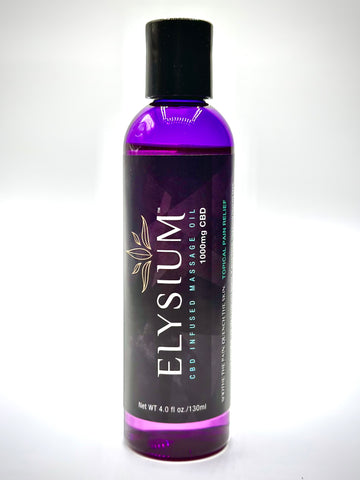Notifications
Creating your own natural massage cream at home is a wonderful way to take control of the ingredients you put on your skin, ensuring a chemical-free, personalized product. Homemade massage creams can be customized to meet various needs, such as muscle relaxation, stress relief, or skin hydration. Making your own massage cream also allows you to incorporate essential oils and natural ingredients that target specific benefits, from soothing sore muscles to nourishing dry skin. Here’s a guide on how to make your own natural massage cream at home and customize it to suit your preferences.

Store-bought creams often contain preservatives, synthetic fragrances, and chemicals that may not be suitable for everyone, especially those with sensitive skin. By making your own massage cream, you can use all-natural ingredients that are gentle on the skin and tailor the cream’s scent, texture, and therapeutic benefits. Homemade creams can be stored for weeks and offer a customizable, eco-friendly alternative to commercial products.
Creating a natural massage cream requires just a few key ingredients that serve as the base for your blend. Each ingredient provides unique benefits and can be adjusted according to your needs.
Base Oils: These form the foundation of your massage cream. Popular choices include coconut oil (great for hydration), olive oil (anti-inflammatory), and sweet almond oil (light and easily absorbed). For a richer cream, you might also consider jojoba oil or avocado oil.
Solid Butters: Butters give the massage cream its creamy texture and boost its moisturizing qualities. Shea butter and cocoa butter are popular choices for their emollient properties and rich texture. They also add a lovely, subtle fragrance.
Beeswax or Vegan Alternative: Beeswax acts as a thickening agent, giving the cream a luxurious feel and helping it to stay on the skin longer, which is ideal for massages. For a vegan option, use candelilla wax.
Essential Oils: Essential oils add therapeutic benefits and fragrance to your massage cream. Lavender (relaxation), peppermint (cooling effect for sore muscles), and eucalyptus (invigorating and purifying) are popular choices. Use a few drops to personalize your cream’s scent and effect.
Vitamin E Oil: Vitamin E is a natural preservative that extends the shelf life of your cream and provides additional skin benefits, like moisturizing and protecting from environmental stressors.
Here’s a simple recipe that you can easily modify based on your preferences:
1/2 cup base oil (coconut, almond, or olive oil)
1/4 cup shea butter or cocoa butter
1 tablespoon beeswax or candelilla wax
10-15 drops essential oil (lavender, peppermint, eucalyptus, etc.)
1 teaspoon vitamin E oil (optional, for preservation and added skin benefits)
Melt the Ingredients: In a double boiler, combine the base oil, shea butter, and beeswax. Heat over low to medium heat, stirring occasionally, until all ingredients are fully melted. Using a double boiler helps avoid direct heat, which can damage the delicate properties of the oils and butters.
Cool Slightly and Add Essential Oils: Once melted, remove the mixture from heat and let it cool slightly. Add your chosen essential oils (about 10-15 drops) and vitamin E oil. Stir thoroughly to ensure the oils are evenly distributed throughout the mixture.
Pour and Cool: Pour the mixture into a clean, sterilized jar. Let it sit at room temperature until it solidifies, which may take a few hours. Alternatively, place it in the refrigerator for faster cooling.
Store Properly: Once the massage cream has solidified, store it in a cool, dry place away from direct sunlight. If kept in an airtight container, your homemade massage cream can last up to three months, especially with the added vitamin E oil.
One of the best parts about making your own massage cream is the flexibility to customize it according to your needs and preferences. Here are a few ways to tailor your cream:
For Muscle Relief: Add a combination of peppermint and eucalyptus essential oils for a cooling effect that soothes sore muscles and helps with relaxation. Peppermint has natural menthol that provides a cooling sensation, making it perfect for post-workout muscle recovery.
For Relaxation and Stress Relief: Use lavender or chamomile essential oils to create a calming, spa-like experience. These oils are known for their relaxing properties and can help relieve stress and promote better sleep.
For Skin Nourishment: Add a few drops of rosehip or frankincense oil, which are rich in antioxidants and help rejuvenate the skin. Cocoa butter and jojoba oil are also excellent choices for dry or mature skin, as they offer deep hydration and skin-repairing properties.
For Sensitive Skin: Use unscented oils and butters, such as shea butter and sweet almond oil, to create a mild cream without any added essential oils. Sensitive skin often benefits from fewer ingredients, so keep your cream simple and fragrance-free.
To get the most out of your homemade massage cream, warm it slightly between your hands before applying. The cream melts as you massage it in, creating a smooth, hydrating barrier that allows you to work deeper into the muscles. Apply to sore areas, joints, or wherever you feel tension, massaging in circular motions. The cream’s moisturizing properties will leave your skin soft and supple, while the essential oils and base ingredients offer targeted therapeutic benefits.
Making your own natural massage cream is an enjoyable and rewarding way to incorporate natural ingredients into your wellness routine. Not only does this DIY approach give you control over the ingredients, but it also provides a deeply personalized experience that commercial products often can’t match. With just a few simple ingredients and a bit of time, you’ll have a luxurious, effective massage cream that enhances both physical relaxation and mental well-being.